Membrane Transporter/Ion Channel
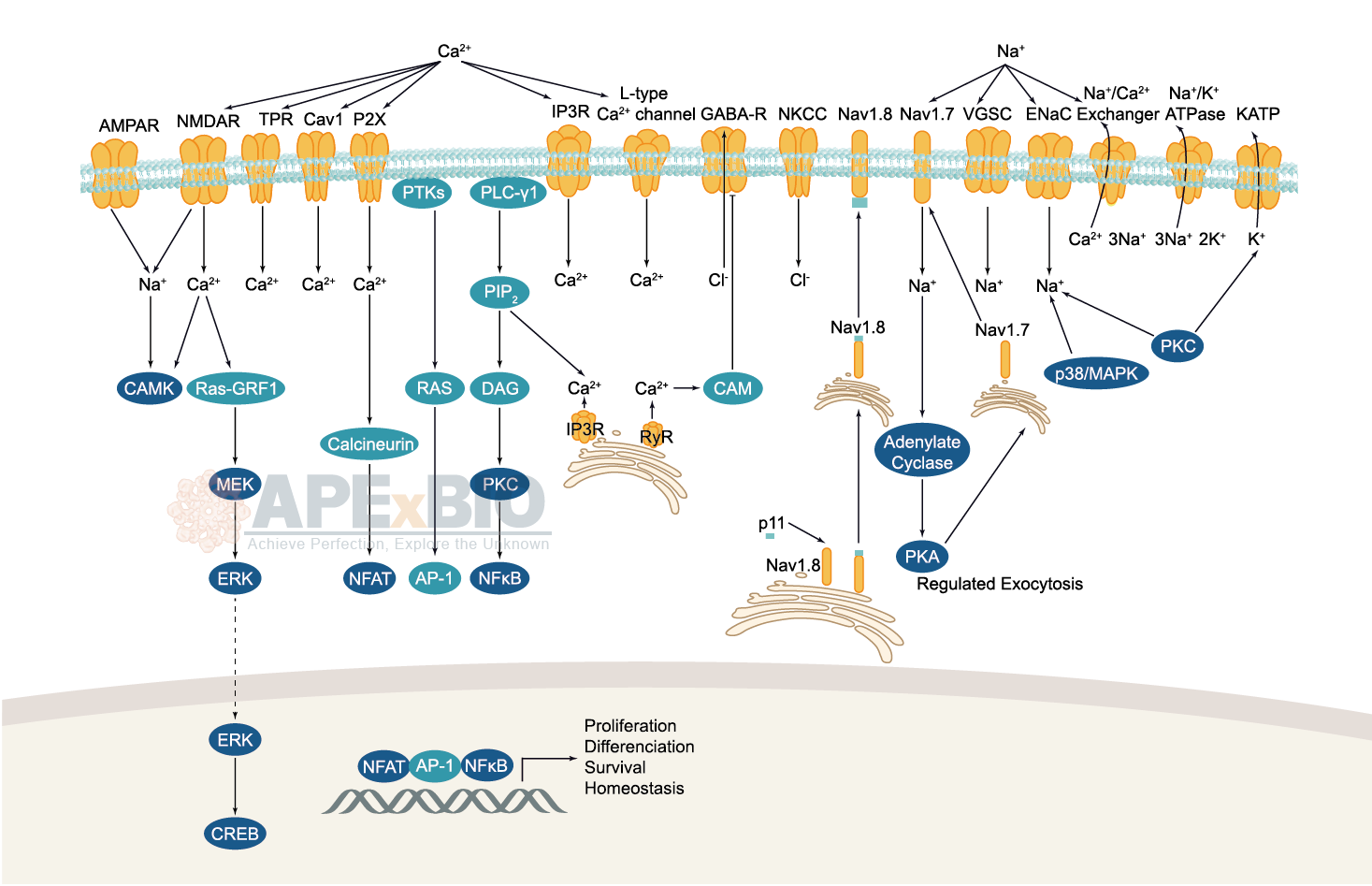
Ion channels are pore-forming membrane proteins which allow the flow of ions across the membrane. The ion channels can be broadly grouped into six families including calcium channels, chloride channels, potassium channels, sodium channels, gap junction proteins and porins. Not all ion channels are gated, such as certain type of K+ and Cl– channels, transient receptor potential superfamily of cation channels, the ryanodine receptors and the IP3 receptors, but most Na+, K+, Ca2+ and some Cl– channels are all gated by voltage. Ligand-gated channels are regulated in response to ligand binding (e.g. neurotransmitters signaling). These ligand-gated neurotransmitter receptors are known as ionotropic receptors. Various neurotransmitters couple to ionotropic receptors such as glutamate, acetylcholine, glycine, GABA, and serotonin.
-
 B7751 GSK 2193874Summary: TRPV4 antagonist, potent and selective
B7751 GSK 2193874Summary: TRPV4 antagonist, potent and selective -
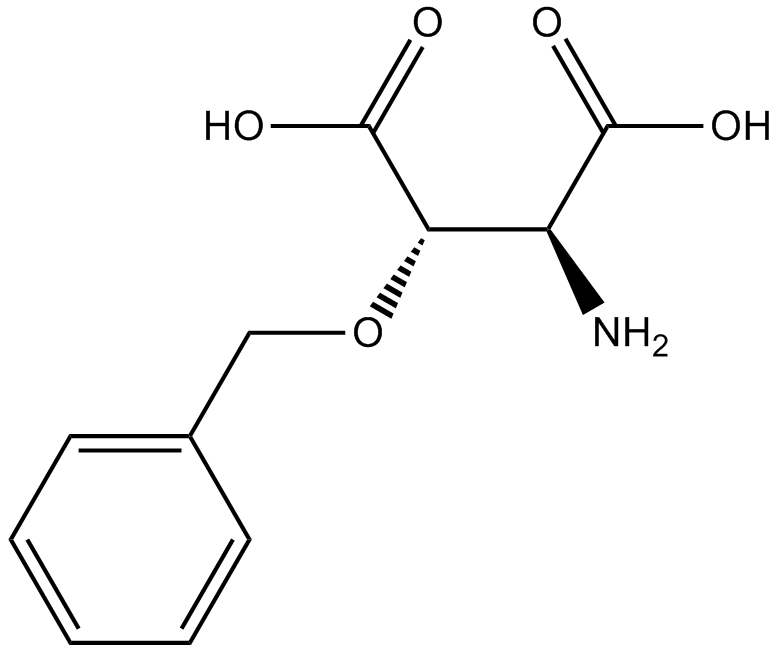 B5084 DL-TBOASummary: inhibitor of excitatory amino acid transporters
B5084 DL-TBOASummary: inhibitor of excitatory amino acid transporters -
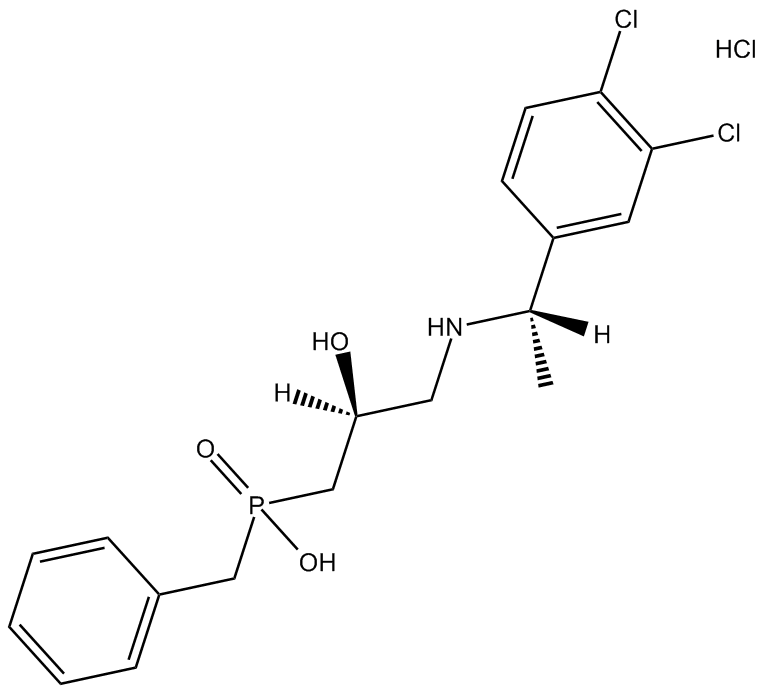 B5086 CGP 55845 hydrochlorideTarget: GABAB ReceptorsSummary: GABAB receptor antagonist
B5086 CGP 55845 hydrochlorideTarget: GABAB ReceptorsSummary: GABAB receptor antagonist -
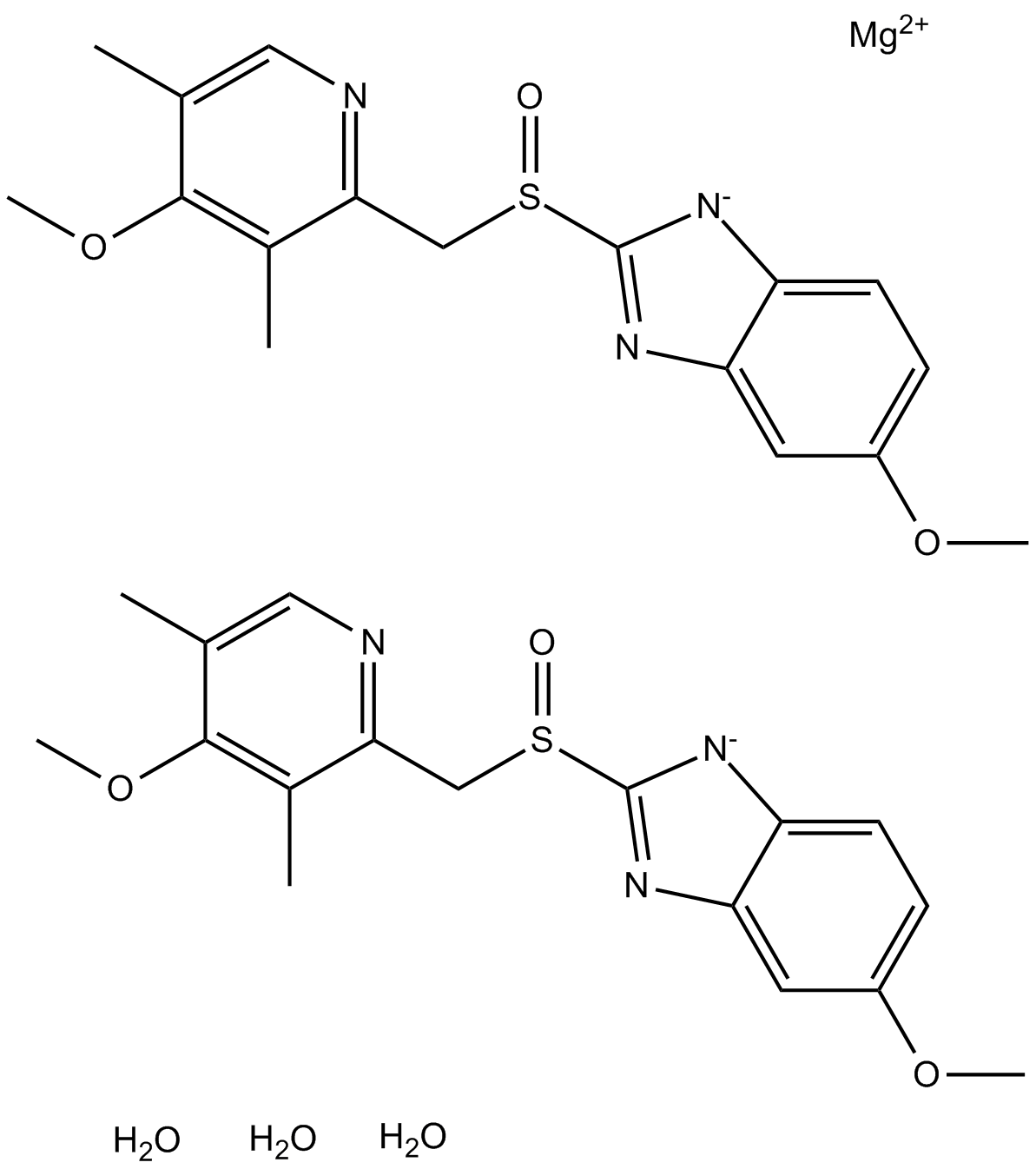 A3399 Esomeprazole Magnesium trihydrateSummary: Proton pump inhibitor
A3399 Esomeprazole Magnesium trihydrateSummary: Proton pump inhibitor -
 A3401 Etifoxine hydrochlorideTarget: GABAA receptorSummary: GABAA receptor potentiator
A3401 Etifoxine hydrochlorideTarget: GABAA receptorSummary: GABAA receptor potentiator -
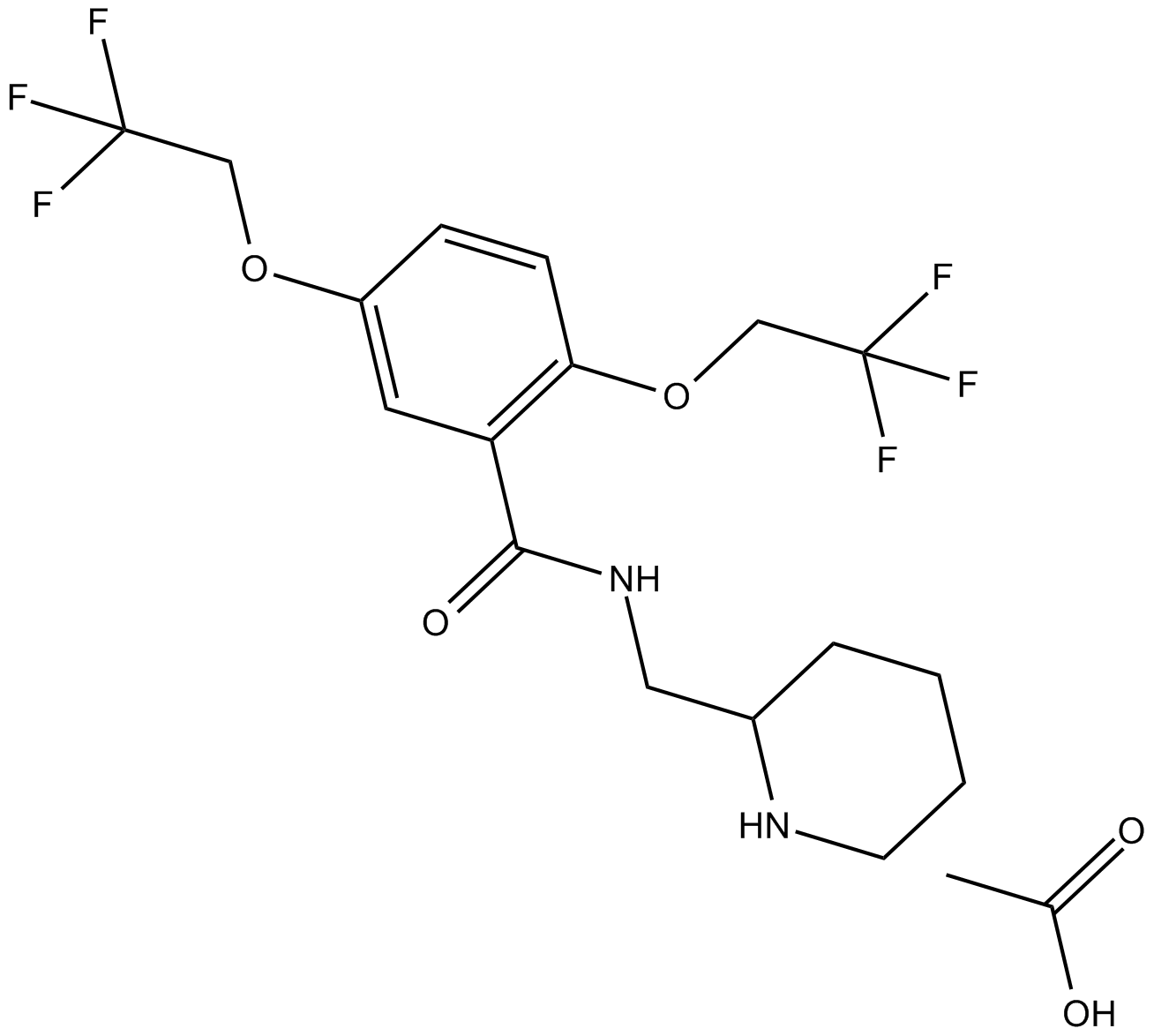 A3418 Flecainide acetateTarget: Voltage-gated Sodium (NaV) ChannelsSummary: Antiarrhythmic drug
A3418 Flecainide acetateTarget: Voltage-gated Sodium (NaV) ChannelsSummary: Antiarrhythmic drug -
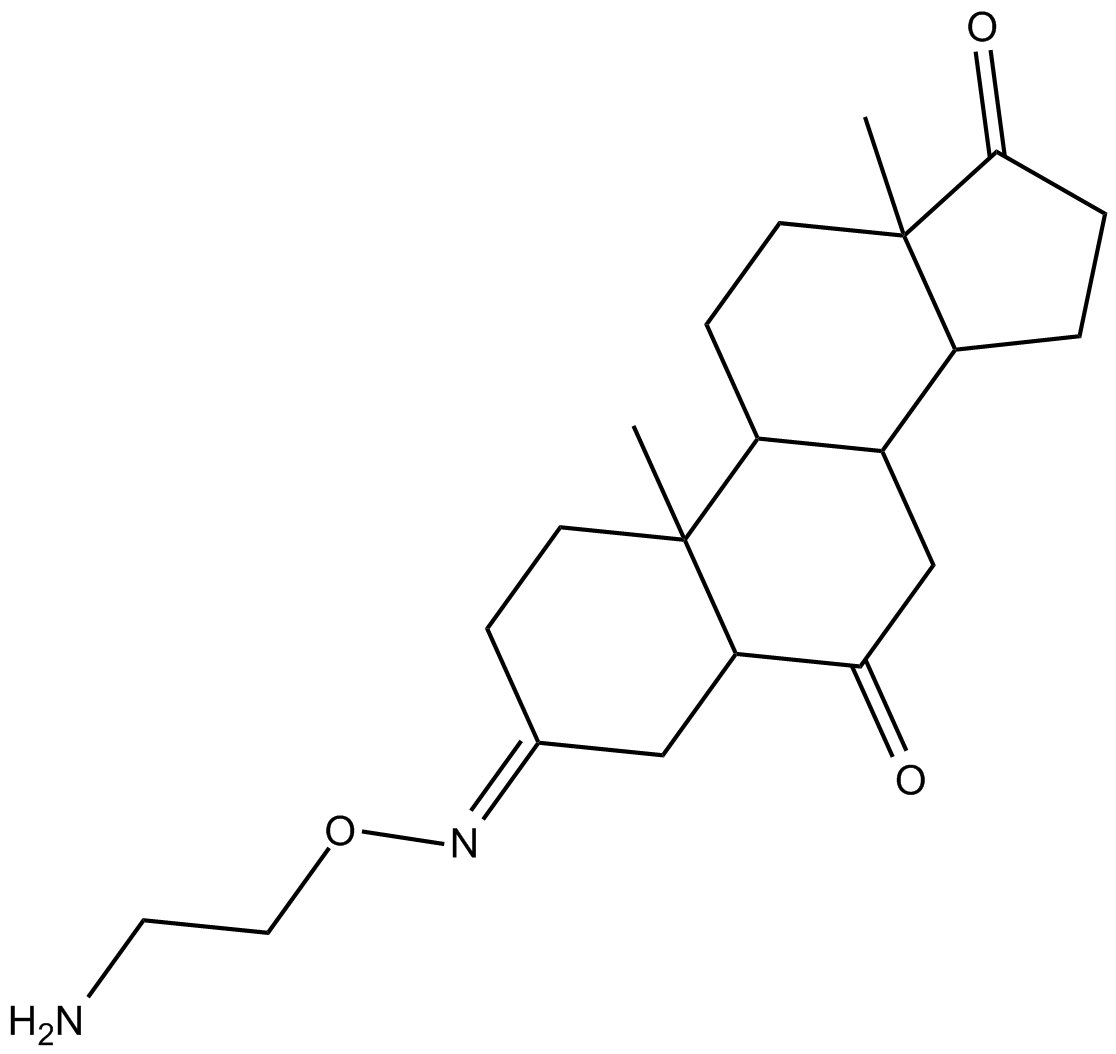 A3507 Istaroxime1 CitationTarget: Na /K ATPasesSummary: Na+/K+ ATPase inhibitor
A3507 Istaroxime1 CitationTarget: Na /K ATPasesSummary: Na+/K+ ATPase inhibitor -
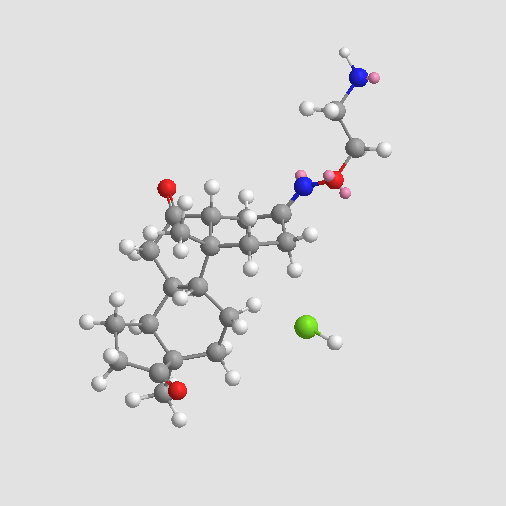 A3508 Istaroxime hydrochlorideSummary: Inhibitor of Na+/K+ ATPase
A3508 Istaroxime hydrochlorideSummary: Inhibitor of Na+/K+ ATPase -
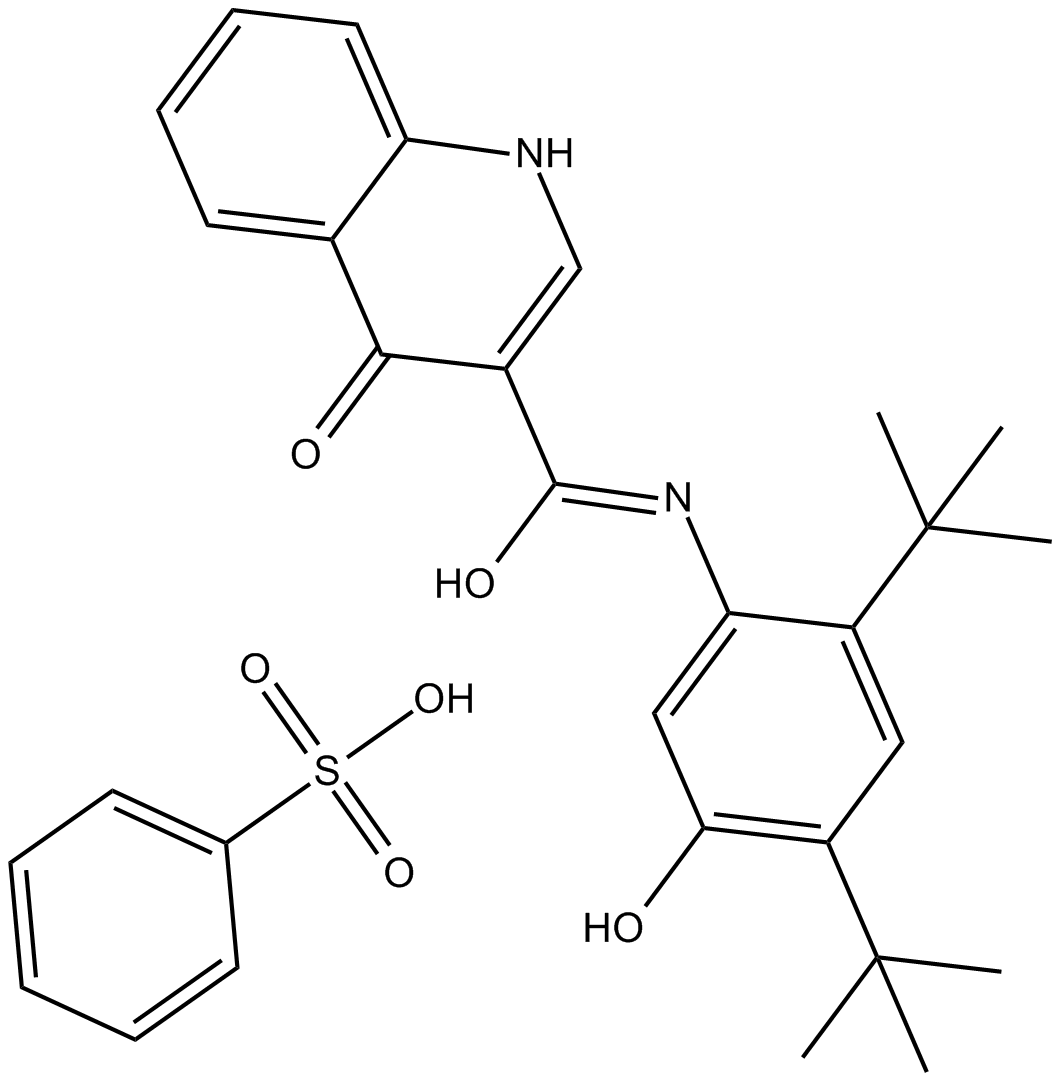 A3510 Ivacaftor benzenesulfonateSummary: CFTR Potentiator
A3510 Ivacaftor benzenesulfonateSummary: CFTR Potentiator -
 A3511 Ivacaftor hydrateSummary: CFTR Potentiator
A3511 Ivacaftor hydrateSummary: CFTR Potentiator

